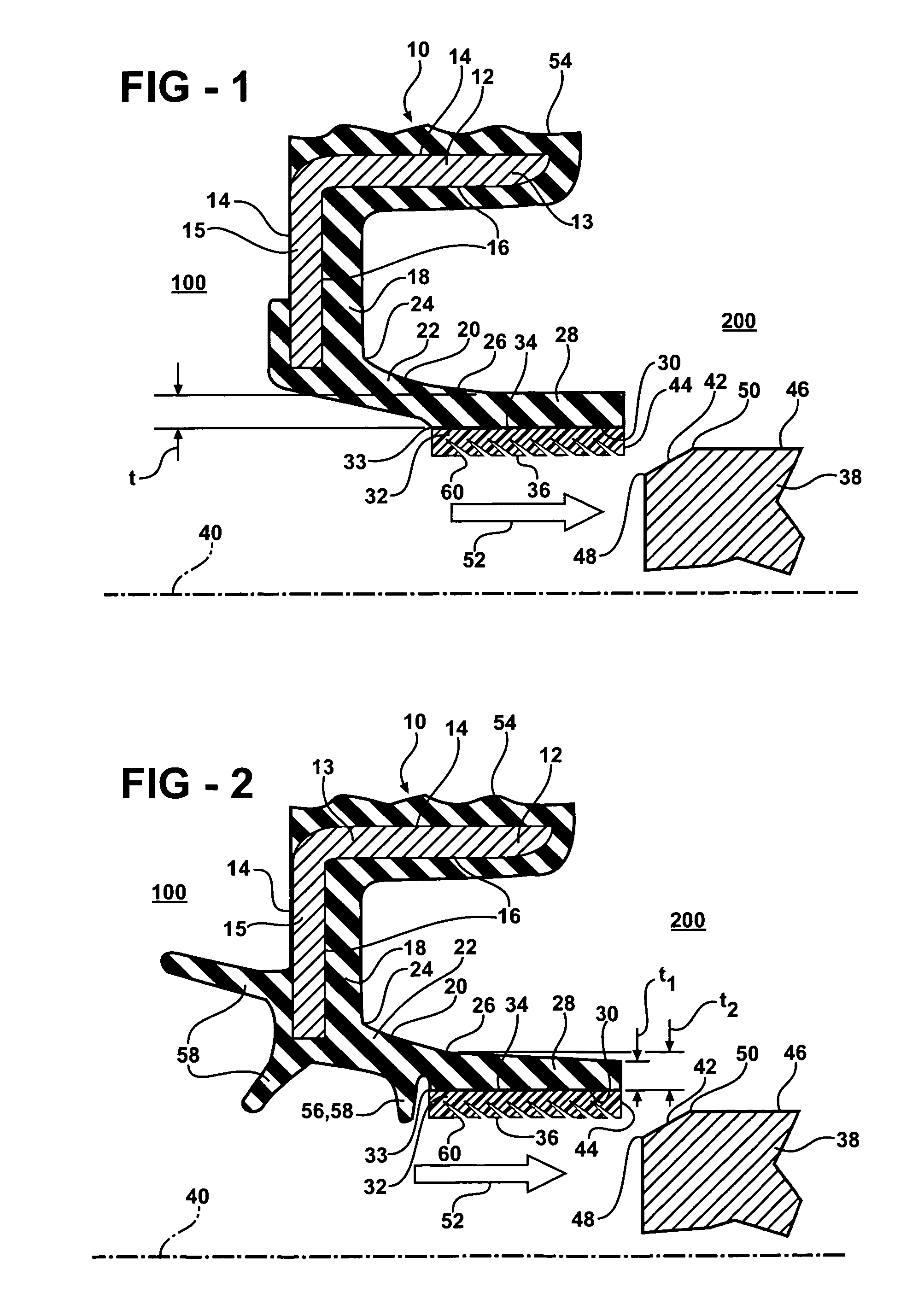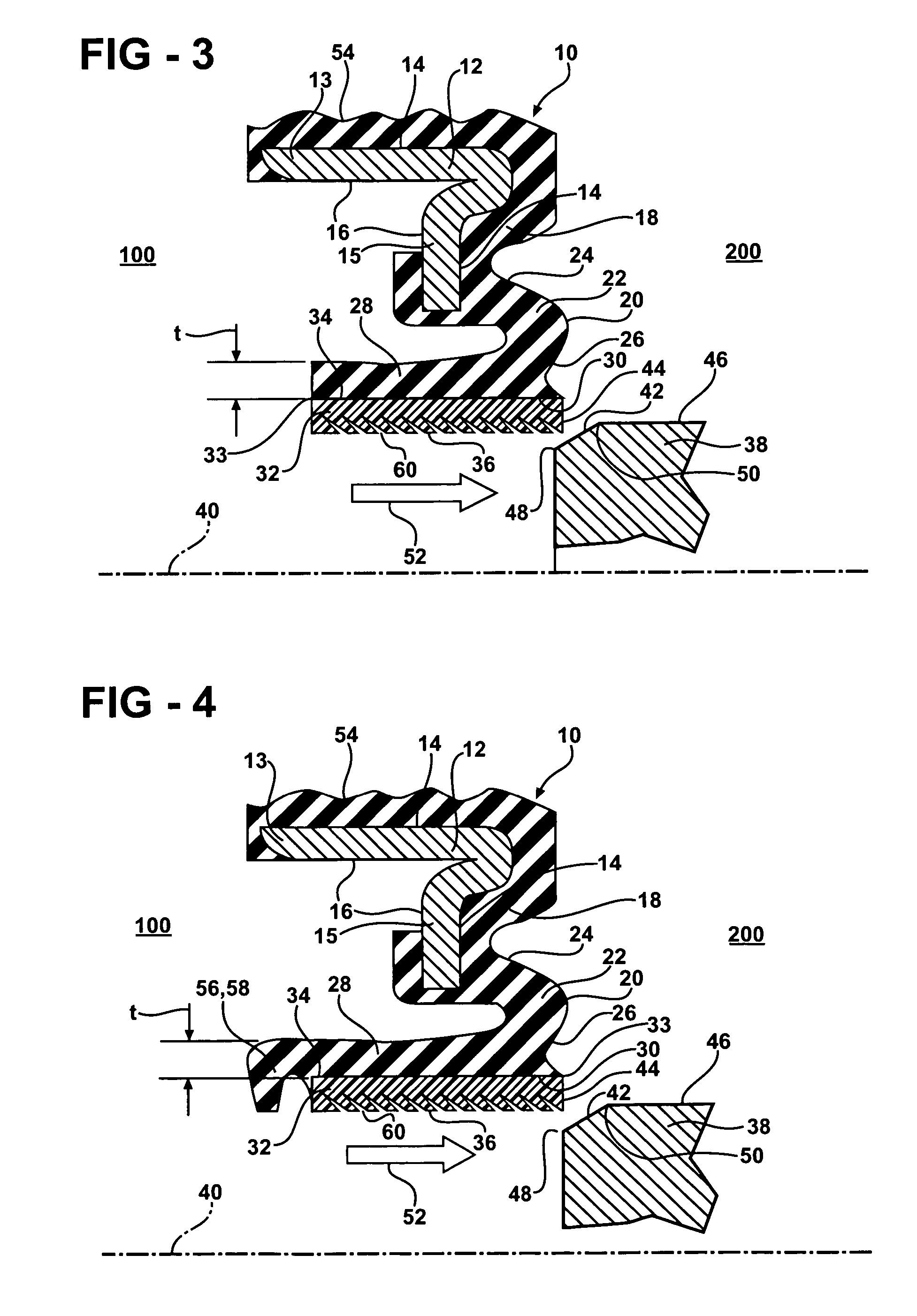Radial seal and method of making
a fluoropolymer and radial seal technology, applied in the field of radial seals, can solve the problems of limited control of the sealing pressure applied, the ptfe sealing element does not seal along its entire length, and the related art radial shaft seal design also has known limitations with respect to the installation of the seal on the shaft or other member to be sealed, so as to improve the installation and test
- Summary
- Abstract
- Description
- Claims
- Application Information
AI Technical Summary
Benefits of technology
Problems solved by technology
Method used
Image
Examples
Embodiment Construction
[0035] The present invention is a radial shaft seal for sealing against passage of a fluid with respect to a rotating radial shaft. The radial shaft seal has as a primary sealing member a pre-stressed fluoropolymer seal which is bonded to an elastomeric casing which is in turn bonded to a rigid casing. In use, the pre-stressed fluoropolymer seal is in fluid tight sealing contact with a sealing surface on a radial shaft. The radial shaft seal is suitable for many radial rotating shaft sealing applications for sealing against passage of a fluid, particularly a number of automotive applications, including a crankshaft seal. Although not illustrated, it will also be understood that the invention applies equally to seals with unitizing wear sleeve elements, wherein the wear sleeve element is located on a circular shaft.
[0036]FIGS. 1-6 show various embodiments of a radial shaft seal 10, according to the invention as molded and trimmed, that is, as the seal 10 is formed in an appropriate ...
PUM
 Login to View More
Login to View More Abstract
Description
Claims
Application Information
 Login to View More
Login to View More - R&D
- Intellectual Property
- Life Sciences
- Materials
- Tech Scout
- Unparalleled Data Quality
- Higher Quality Content
- 60% Fewer Hallucinations
Browse by: Latest US Patents, China's latest patents, Technical Efficacy Thesaurus, Application Domain, Technology Topic, Popular Technical Reports.
© 2025 PatSnap. All rights reserved.Legal|Privacy policy|Modern Slavery Act Transparency Statement|Sitemap|About US| Contact US: help@patsnap.com



